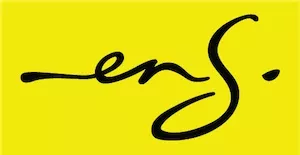- in Africa
- in Africa
- in Africa
- in Africa
- in Africa
- in Africa
- in Africa
- with readers working within the Banking & Credit and Business & Consumer Services industries
- within International Law, Law Department Performance and Consumer Protection topic(s)
Background
Adcock Ingram and Cipla Medpro are competitors in the pharmaceutical industry.
Adcock manufactures, markets and supplies a medicine called URIZONE under license from an Italian company called Zambon S.P.A. URIZONE is a broad-spectrum antibiotic product with the active ingredient Fosfomycin used for the treatment of urinary tract infections.
Cipla manufactures a generic product of URIZONE, a broad-spectrum antibiotic product with the active ingredient Fosfomycin used for the treatment of urinary tract infections, which is called FURIZOME.
Both URIZONE and FURMIZONE are registered with the South African Health Products Regulatory Authority (“SAHPRA”), and both are sold in 3-gram sachets.
Facts
Adcock claimed that the FURIZOME trade mark was confusingly similar to their URIZONE trade mark and argued that Cipla's use of FURIZOME was intended to capitalise on the reputation and goodwill of the URIZONE mark. Cipla has also created a brochure, which shows a comparison of the two products side by side.
Cipla argued that FURIZOME was an invented word and that there is no possibility of deception or confusion, as the product is a Schedule 4 product and certain safeguards are placed on the prescription and the dispensing and sale of the products, including that it is only available upon prescription by a doctor.
In response to the argument that the prospect of confusion is reduced because it is a prescription drug, Adcock referred to a previous case between the parties (ZEMAX vs ZETOMAX) where this same argument had failed.
Court's findings
The count found that “it is incontestable that the URIZONE trademark has acquired a reputation and goodwill in South Africa. It is renowned to individuals interested in the product or services associated with the mark.”
And further that “doctors are not infallible, and do not possess a perfect recollection or perception of even all medicines they prescribe. They, too, make mistakes.”
The High Court ruled in favour of Adcock, finding that the FURIZOME trade mark was confusingly similar (on all three grounds - phonetically, visually and conceptually) to URIZONE and could cause confusion among consumers, in particular as they were used for the treatment of the same condition.
Key Lessons from an IP perspective:
- Trade mark Similarity:
- Other Registrations: The fact that the marks were registered with SAHPRA had no bearing on the trademark infringement claim. This is important to note in your industry as well.
- Licence Agreements: Even though the URIZONE patent had expired, the licence for the use of the trademark was still in place, which gave Adcock the right to continue to use it and, more importantly, to prevent the generic product from being sold under a confusingly similar brand.
The content of this article is intended to provide a general guide to the subject matter. Specialist advice should be sought about your specific circumstances.
[View Source]

